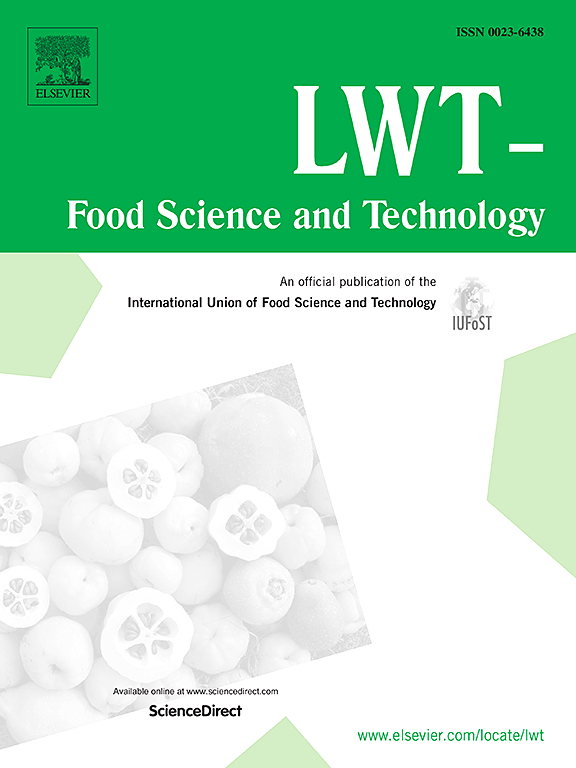Royal jelly: A novel eco-friendly biotemplate for the sustainable green synthesis of antibacterial silver, iron, copper, and zinc nanoparticles
IF 6
1区 农林科学
Q1 FOOD SCIENCE & TECHNOLOGY
引用次数: 0
Abstract
This study explored the potential of royal jelly as an eco-friendly bio-reducing agent for synthesizing silver, iron, copper, and zinc nanoparticles and assessed their antibacterial properties. The nanoparticle synthesis was assessed by defining zeta-potential, particle size, and polydispersity and evaluated through Fourier Transform Infrared Spectroscopy (FTIR), ultraviolet–visible (UV–Vis), fluorescence emission, and transmission electron microscopy (TEM). The antibacterial activity of nanoparticles was examined by agar disc inhibition zone, minimum inhibitory concentrations (MIC), minimum bactericidal concentrations (MBC), scanning electron microscope (SEM), and Raman spectroscopy. FTIR indicates that the royal jelly protein is responsible for nanoparticle generation. Nanoparticles exhibit large negative zeta potential, with microscale polydisperse particle size. Nanoparticles increase UV light absorbance and reduce the fluorescence emission of royal jelly. TEM confirmed the formation of spherical and clustered nanostructures in nanoparticles. Royal jelly displays weak while royal jelly-synthesized nanoparticles display strong antibacterial activity. SEM and Raman spectroscopy confirmed morphological changes in the bacterial cell wall and membrane by nanoparticles. This research emphasizes the role of royal jelly as an eco-friendly reducing agent in sustainable antibacterial nanoparticle synthesis for applications in the food industry to extend shelf life, improve food packaging, and enhance food safety by inhibiting pathogen growth.
求助全文
约1分钟内获得全文
求助全文
来源期刊

LWT - Food Science and Technology
工程技术-食品科技
CiteScore
11.80
自引率
6.70%
发文量
1724
审稿时长
65 days
期刊介绍:
LWT - Food Science and Technology is an international journal that publishes innovative papers in the fields of food chemistry, biochemistry, microbiology, technology and nutrition. The work described should be innovative either in the approach or in the methods used. The significance of the results either for the science community or for the food industry must also be specified. Contributions written in English are welcomed in the form of review articles, short reviews, research papers, and research notes. Papers featuring animal trials and cell cultures are outside the scope of the journal and will not be considered for publication.
 求助内容:
求助内容: 应助结果提醒方式:
应助结果提醒方式:


